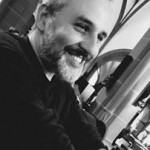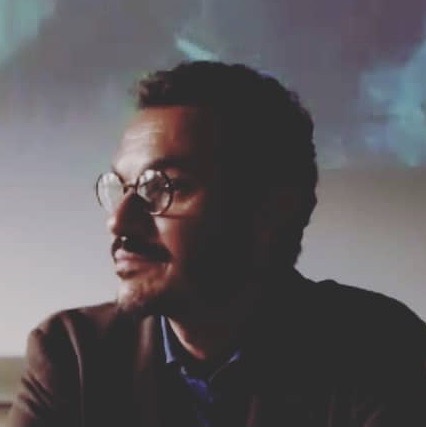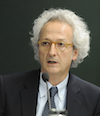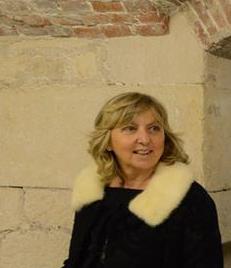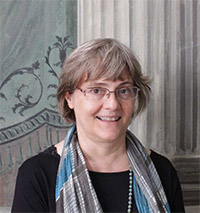Studying at the University of Verona
Here you can find information on the organisational aspects of the Programme, lecture timetables, learning activities and useful contact details for your time at the University, from enrolment to graduation.
Academic calendar
The academic calendar shows the deadlines and scheduled events that are relevant to students, teaching and technical-administrative staff of the University. Public holidays and University closures are also indicated. The academic year normally begins on 1 October each year and ends on 30 September of the following year.
Course calendar
The Academic Calendar sets out the degree programme lecture and exam timetables, as well as the relevant university closure dates..
| Period | From | To |
|---|---|---|
| 1° semestre lezioni a Trento | Sep 13, 2021 | Dec 22, 2021 |
| 1 A | Sep 27, 2021 | Nov 6, 2021 |
| 1 B | Nov 15, 2021 | Jan 12, 2022 |
| 2° semestre lezioni a Trento | Feb 14, 2022 | May 27, 2022 |
| 2 A | Feb 14, 2022 | Mar 26, 2022 |
| 2 B | Apr 4, 2022 | Jun 4, 2022 |
| Session | From | To |
|---|---|---|
| Sessione d'esame invernale | Jan 10, 2022 | Feb 12, 2022 |
| Sessione d'esame estiva | Jun 6, 2022 | Jul 23, 2022 |
| Sessione d'esame autunnale | Aug 29, 2022 | Sep 24, 2022 |
| Session | From | To |
|---|---|---|
| Sessione straordinaria (a.a. 2020/21) | Mar 28, 2022 | Apr 2, 2022 |
| Sessione estiva | Jul 11, 2022 | Jul 16, 2022 |
| Sessione autunnale | Nov 7, 2022 | Nov 12, 2022 |
| Sessione straordinaria | Mar 31, 2023 | Apr 6, 2023 |
| Period | From | To |
|---|---|---|
| Festività natalizie | Dec 24, 2021 | Jan 2, 2022 |
| Festività pasquali | Apr 15, 2022 | Apr 19, 2022 |
| Festività Santo Patrono di Verona | May 21, 2022 | May 21, 2022 |
| Chiusura estiva | Aug 15, 2022 | Aug 20, 2022 |
Exam calendar
Exam dates and rounds are managed by the relevant Culture and Civilisation Teaching and Student Services Unit.
To view all the exam sessions available, please use the Exam dashboard on ESSE3.
If you forgot your login details or have problems logging in, please contact the relevant IT HelpDesk, or check the login details recovery web page.
Should you have any doubts or questions, please check the Enrollment FAQs
Academic staff

Bassetti Massimiliano
 massimiliano.bassetti@univr.it
massimiliano.bassetti@univr.it
 045802 8376
045802 8376
 giovanni.bernardini@univr.it
giovanni.bernardini@univr.it
 giovanni.ciappelli@univr.it
giovanni.ciappelli@univr.it
 giorgia.proietti@unitn.it
giorgia.proietti@unitn.it
 cecilia.sideri@univr.it
cecilia.sideri@univr.it
Study Plan
The Study Plan includes all modules, teaching and learning activities that each student will need to undertake during their time at the University.
Please select your Study Plan based on your enrollment year.
1° Year
| Modules | Credits | TAF | SSD |
|---|
Medieval History, History of Christianity and Churches
Contemporary History I - LM
Early Modern History I - LM (Historical Anthropology)
1 module among the following1 module between the followingHistory of Science and Technology - LM
1 module between the followingHistory of Political Institutions II
History of Political Thought
1 module among the following
History of Medieval Art I
Medieval Latin Literature II
Digital tools for historical research
2° Year activated in the A.Y. 2022/2023
| Modules | Credits | TAF | SSD |
|---|
| Modules | Credits | TAF | SSD |
|---|
Medieval History, History of Christianity and Churches
Contemporary History I - LM
Early Modern History I - LM (Historical Anthropology)
1 module among the following1 module between the followingHistory of Science and Technology - LM
1 module between the followingHistory of Political Institutions II
History of Political Thought
1 module among the following
History of Medieval Art I
Medieval Latin Literature II
Digital tools for historical research
| Modules | Credits | TAF | SSD |
|---|
Legend | Type of training activity (TTA)
TAF (Type of Educational Activity) All courses and activities are classified into different types of educational activities, indicated by a letter.
Medieval History II - LM (2022/2023)
Teaching code
4S003215
Teacher
Coordinator
Credits
6
Language
Italian
Scientific Disciplinary Sector (SSD)
M-STO/01 - MEDIEVAL HISTORY
Period
1° semestre Trento dal Sep 19, 2022 al Dec 22, 2022.
Location
TRENTO
Learning objectives
To deepen one or more aspects or specific themes of medieval society through the reading and the commentary, oral and written, of sources of various typologies and the reading and discussion of relevant historiographical contributions. To provide the student with the methodological and critical tools necessary for the initiation of independent research work.
Prerequisites and basic notions
Students are required to have a basic knowledge of medieval history and of Latin.
Program
Perceptions of Africa and Africans in medieval Europe.
Is it possible to propose a global history of the Late Middle Ages? And, in this perspective, how can we study the history of the representation of Africa and Africans? The course aims to answer these questions. It will do so through two case studies. The first, reconstructed through a dossier of sources proposed in class, will concern the cult of Saint Maurice and the context that led to the placement of a statue of Saint Maurice with sub-Saharan features to protect the tomb of Emperor Otto I in Magdeburg in the 13th century. The second, reconstructed on the basis of a recent monograph by the anthropologist Marco Aime, will examine the case of the pilgrimage to Mecca undertaken by the Sultan of Mali, Mansa Musa, in 1324 and its impact on the world economy of the time, demonstrating the full inclusion of sub-Saharan Africa in the economic and political links that linked Africa, Asia and Europe.
Bibliography
Didactic methods
The course will be mainly seminar-based and will be based on the reading and commentary of recent historiographical sources and interpretations.
After having received the necessary knowledge, in the course of the lectures the students will try to analyse autonomously some of the proposed sources. They will then have to write a short essay on their own, based on indications given in the lectures, to be handed in before the exam.
Learning assessment procedures
The examination consists of two distinct parts. In the first part, students will have to answer questions aimed at verifying the acquisition of the knowledge provided by the lectures and the reading of the course reference texts. In the second part, they will present and discuss with the professor a short essay on the topics covered in class, to be agreed in advance with the teacher (max. 10 pages = 20,000 characters). The essay must be agreed in advance with the lecturer and sent by e-mail at least 3 days before the exam. The lecturer will publish the instructions on how to write the essay and upload pdf's of essays that can be used for the term paper on the university's moodle website under the link for the course.
Evaluation criteria
Attendance and active participation in the training activities offered by the course (lectures alternating with seminar-style teaching) and individual study will ensure that students be able to:
Define and describe the specific characteristics of the knowledge and representations of Africa and Africans in the early and late Middle Ages;
define and describe the specific characteristics of the cult of Saint Maurice and be able to explain its significance for the perception of Africa and Africans between the 10th and 13th centuries; and define and describe the specific characteristics of the pilgrimage of the Mali Sultan Mansa Musa to Mecca, and be able to explain its importance for the perception of Africa and Africans in the 14th century; - be able to orientate oneself in the history of Africa and of Africans from the 10th to the 13th century;
be able to orient themselves in the debate on the global history of the Middle Ages;
Identify and analyse primary sources from the Middle Ages.
Analyse a historical map;
Write a short essay on the topics discussed in class.
Criteria for the composition of the final grade
Each of the two parts in which the examination consists will contribute 50% to the final grade.
Exam language
Italiano
Type D and Type F activities
COMPETENZE TRASVERSALI
Modules not yet included
Career prospects
Module/Programme news
News for students
There you will find information, resources and services useful during your time at the University (Student’s exam record, your study plan on ESSE3, Distance Learning courses, university email account, office forms, administrative procedures, etc.). You can log into MyUnivr with your GIA login details: only in this way will you be able to receive notification of all the notices from your teachers and your secretariat via email and soon also via the Univr app.
Linguistic training CLA
Double degree
The University of Verona, through a network of agreements with foreign universities, offers international courses that enable students to gain a Double/Joint degree at the time of graduation. Indeed, students enrolled in a Double/Joint degree programme will be able to obtain both the degree of the University of Verona and the degree issued by the Partner University abroad - where they are expected to attend part of the programme -, in the time it normally takes to gain a common Master’s degree. The institutions concerned shall ensure that both degrees are recognised in the two countries.
Places on these programmes are limited, and admissions and any applicable grants are subject to applicants being selected in a specific Call for applications.
The latest Call for applications for Double/Joint Degrees at the University of Verona is available now!
Graduation
List of theses and work experience proposals
| theses proposals | Research area |
|---|---|
| Ambiti di tesi | Art & Architecture - Art & Architecture |
Student mentoring
Student login and resources
Manifesto degli studi
Manifesto degli studi del CdLM interateneo in Scienze storiche
Documents
| Title | Info File |
|---|---|
|
|
pdf, it, 466 KB, 26/02/24 |
|
|
pdf, it, 456 KB, 26/02/24 |

